Kind readers have translated the Perfect Health Diet food plate into many languages. Click thumbnail images to enlarge. (An explanation of our diet and the plate can be found here.)
If you’d like to help us translate the food plate into your language, wonderful! Simply download our
PHD Food Plate Template, make changes in Powerpoint, and email the edited file back to pauljaminet@perfecthealthdiet.com.
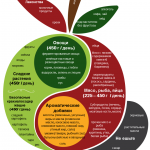 |
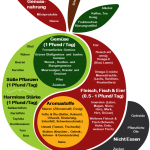 |
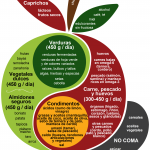 |
| Russian (courtesy Irina Kuznezova) | German (courtesy Irina Kuznezova) | Spanish (courtesy Melanie Díaz) |
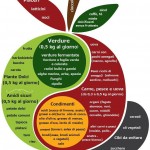 |
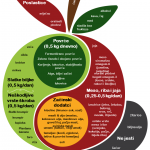 |
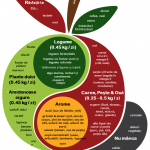 |
| Italian (courtesy Andrea Tasinato) | Croatian (courtesy Domagoj Dzojic) | Romanian (courtesy Ioana Raluca Chifa) |
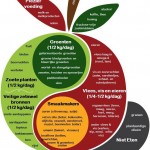 |
 |
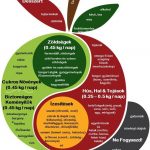 |
| Dutch (courtesy Léonne Willems) | Czech (courtesy of Jiří Kaloč) | Hungarian (courtesy of Katalin Kokavecz) |
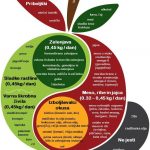 |
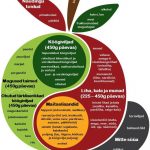 |
|
| Slovenian (courtesy of Urška Osterman) | Estonian (courtesy of Risto Piirisaar) |
The Old (2010) Food Plate
We updated our food plate in late 2014, in the course of writing our cookbook (still in progress). Translations of the original (2010) food plate may be found below.
European Languages
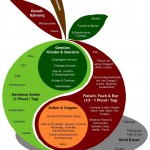 |
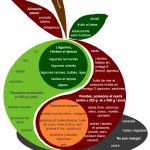 |
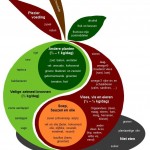 |
| German version, by Constantin Gonzalez and guzolany | French version, by Nadia Bachi | Dutch version, by Wout Mertens |
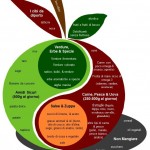 |
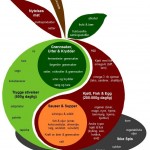 |
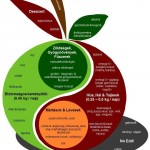 |
| Italian version, by Martin Inderhaug | Norwegian version, by Martin Inderhaug | Hungarian version, by Ildikó Koltai |
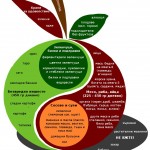 |
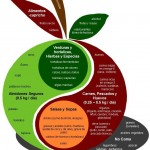 |
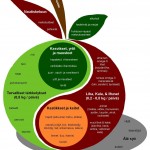 |
| Bulgarian version, by Kiril Roussev | Spanish version, by EugeniaDG | Finnish version, by Jukka Turunen |
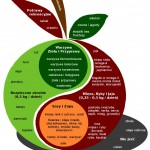 |
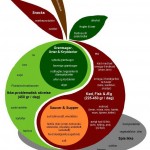 |
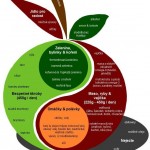 |
| Polish version, by Adam F. | Danish version, by Jan Petersen and Henrik Johnsen | Czech version, by Nina Nohejlova |
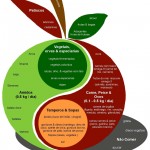 |
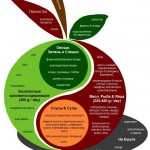 |
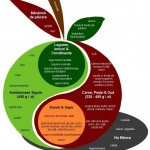 |
| Portuguese version, by Marcelo Leal | Russian version, by Vasily Dobrokhotov | Romanian version, by Ioana Raluca Chifa |
Asian Languages
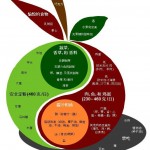 |
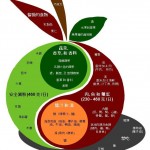 |
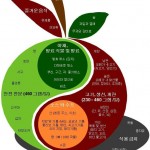 |
| Chinese (simplified) version, by Shou-Ching Jaminet | Chinese (traditional) version, by Shou-Ching Jaminet | Korean version, by Shou-Ching Jaminet |
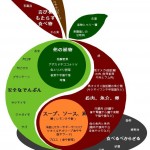 |
||
| Japanese version, by Jarrett McAnally |
Middle Eastern and African Languages
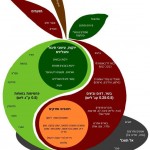 |
||
| Hebrew version, by Miki Ben-Dor |
If you would like to translate the Perfect Health Diet food plate into your language, please write to pauljaminet@perfecthealthdiet.com.











Hello!
There are two minor mistakes in the German translation:
1. “Meeresfrüchte” in German only means “shellfish” and does not contain “fish” like salmon or sardines as your term “seafood” does. So we have to say “Fisch & Meeresfrüchte” in German.
2. Just as in the English language, in German we do distinguish between “lard” and “tallow”. Because “lard” = “Schmalz” does not belong to beef or ducks, and therefore “beef lard” or “duck lard” does not exist, we should call it also “beef tallow” and “duck fat” in German: “Rindertalg” and not “Rinderschmalz” and “Entenfett” and not “Entenschmalz”. The latter is quite often used incorrectly.
Cheers, guzolany
Thanks, guzolany. We appreciate the corrections!
Much more important: Thank YOU very much for the brilliant 2nd Edition of the PHD-book!! I bought the printed version for the “serious work” AND the ebook for “easy reading” in bed…
Unfortunately I am still struggling a bit with my argumentation towards “safe starches” when the well educated diabetics in my family come into play and tell me that not only the glycemic index is relevant for blood sugar (and/or insulin) rises but even more the glycemic LOAD, that I did not find mentioned in the book yet(?).
That is why they prefer the “LOGI”-diet, what translates to “LOw Glycemic and Insulinogenic” diet, and it is hard for me to find the arguments in favour to higher amounts of starches that will cause a high glycemic LOAD.
I have also seen massive blood sugar rises in those people when serving them common portions of “Bauernfrühstück” (a sort of bacon and potato omelette). I would really love to introduce them to the PHD (“LOGI” allows nearly all kinds of food including the evil grains [in small amounts], legumes and canola oil, what I refuse intensively), but I do not dare this without adaptions in the amount of starches to be allowed.
Is there a rule of thumb how to manage this? (They only get oral medication [Metformin] and no insulin injections yet)
Keep up your brilliant work! (I am sure you will)
Cheers, guzolany
Hi guzolany,
Glycemic load is just glycemic index multiplied by amount of carbs. We prescribe a specific amount of carbs, and it is about half the amount most people eat (50% carb –> 25% carb). So since both glycemic index and quantity are controlled, our glycemic load is relatively low too.
The LOGI strategy is a sensible modification of normal diets, but it doesn’t address every potential avenue for improvement.
Most diabetics monitor blood glucose and I would suggest they do that and experiment. Most PHD diabetics find they control blood sugar better eating our way and, if they inject insulin, are able to reduce insulin dose. That experience is really a better proof than arguments.
Every diabetic is a little different so I don’t feel comfortable prescribing a specific carb amount. However, I believe the optimum for every diabetic will be between 10% and 30% carbs, with higher protein intake if carb intake is lower.
Also, starches should be mixed with vegetables or berries (for some fiber and a little ‘catalytic’ fructose), may be best eaten cooled (for more resistant starch), should be eaten with fat (eg add butter or coconut milk to the potato omelette), and a bit of protein too, ie as balanced meals.
I think intermittent fasting and exercise and circadian rhythm therapies are highly desirable for diabetics, but don’t do IF if blood glucose doesn’t remain stable during the fast or if there is adrenal stress.
Hi Paul,
I have type 1 diabetes and have been doing PHD and IF.
IF doesn’t always work out as I have to rescue a low blood sugar level in the middle of the night sometimes if basal insulin is out even slightly – which is common with T1D. No more hypos on IF than when not doing IF though.
I was wondering, does having dextrose or apple juice during IF completely negate all of the benefits of the fast on that particular day? Not that I’ll be stopping if it does – just wondered!
Also would Dextrose / AJ be preferable? Both do the job fine.
Thanks
Hi Claire,
Blood glucose excursions will do a lot more harm than IF will benefit you, so you should not do IF at the expense of impaired glucose control. However, try to respect circadian rhythms and concentrate calories as much as possible in your 12 hour day and minimize calories in your 12 hour night.
The benefits of IF are predominantly achieved through circadian rhythm entrainment so a clear 12/12 demarcation is desirable. Dextrose or AJ are both fine as sources of glucose. I did a post on sugar and the best glucose control is with a little fructose mixed in, maybe 25% fructose and 75% glucose, check the ratios in apple juice but it may be a little bit better than dextrose only, or you could mix the two. Find the smallest amounts you can take at night to get good control, and have a protein-rich breakfast at the start of day and a little food at the end of day to help tide you over.
Best, Paul
Thank you a lot! I’ll try my very best to convince them.
And to start my own PHD asap. While others do very well on it, my several personal LOGI-attempts were no success for me – always hungry, even at the “Lutz”-(“Life without bread”)-doses of 72-108 g CH/d.
(Sorry… I didn’t use the “reply” button as I should have done…)
Some minor corrections for the italian translation :
PLEASURE FOODS : cibi per il piacere
TARO : unknown in Italy, anyway “Radice del Taro”
SAGO : unknown, “amido della Palma”
SAFE STARCHES : (carboidrati) amidacei consentiti
verdure fermentatE
verdure coloratE
radicI
ALCOHOL : alcol
STALK VEGETABLES : verdura a gambo
SAUCES & SOUPS : condimenti e zuppe
grassO di anatra
carnI con pocHI omega 6
SEAFOOD : pesce ricco di omega 3
ossObuco
altrI tipi di carne e pesce
Thanks Max, I’ll try to get those updates in.
OMG, spanish version is very worng it says rich IN OMEGA 6 seafood, and it is omega 3!!!!! Also it would be useful to have a translation in quilograms, not in pounds…
Hi Vanessa,
Can you tell me how it should read?
Best, Paul
Hi Paul, you should just change the number in the word omega-6 to omega-3. Currently the Spanish says to eat fish rich in omega-6.
Hi Paul, Shou-Ching, and Kamal,
A question, and an observation. First the observation…
O: There is a mistake/misprint in the Spanish version of the Perfect Health Diet food plate. It reads, “carnes ricas en omega-6 (salmón, sardinas, mariscos)”, whereas in English it states, “omega-3 rich seafood (salmon, sardines, shellfish)”; therefore, “carnes ricas en *omega-3* (salmón, sardinas, mariscos)” would be the proper translation. Otherwise, our Spanish speaking friends may start to wonder why their omega-6s aren’t balancing themselves out! Thank you Rafael for taking the time to translate, though.
Update: I wrote the above before seeing that Vanessa and Erin had spotted this same mistake/misprint; however, since it has not been updated, I decided to leave this in as a reminder.
Now the question…
Q: There’s this golden retriever, who brings much joy and laughter to the world (and, oddly enough, I think resembles Richard Gere), with a dangerous tumor lodged between its neck and thoracic cage. In my attempts to improve his quality of life, I plan to bombard him with bone broth, and adhere to most of the other PHD cancer guidelines (for humans), but stumbled upon the following article today:
I’m not too concerned… but started wondering if it’s possible that excess glycine could lead to a negative outcome in this case (as a result of accelerated tumor growth)?
Any comments welcome, and thank you in advance for your thoughtful reply.
Regards,
Gabriel
Woops… the web link is working, the title of the article didn’t appear though:
Boston-area team finds cancer cells have appetite for glycine, providing lead in effort to halt tumors
http://www.boston.com/whitecoatnotes/2012/05/24/boston-area-team-finds-cancer-cells-have-appetite-for-glycine-providing-lead-effort-halt-tumors/k6yFTmSKUeoqYtNprjjSsM/story.html
Just reading the PHD book and am starting to implement the plan this weekend. Have been doing low carb for some time now, but your plan looks interesting. I will keep you posted.
Nice work.
Pete
No russian yet?
I am telling my mom all about this book, how it changed my life and my understanding of food and it’s impact on health. The book is very inspiring and would be better if she read it herself.
I read that high concentrations of omega-6 in breastmilk cause skin conditions in babies. My then 6-month old was breastfed exclusively and had acne and eczema. I was eating a lot of nuts every day, because they are so “healthy”! Stopped immediately, he is 7.5 mo and has clear skin!
Hi Tatiana,
Perhaps you can provide us with a Russian translation of the food plate? We would love to find a Russian publisher for the book, but haven’t gotten interest yet.
Very happy to hear your baby is better!
Hi Paul, I figured you guys were probably busy, so I went ahead and edited the Spanish Version to read omega-3 (sorry if it’s a bit shoddy… used Window’s Paint :o)
http://i698.photobucket.com/albums/vv342/Gabri31/PHD-Food-Plate-Spanish-Rafael-B-PhD_zps9b206fb0.jpg
Thanks Gabriel. We are busy but I’ll try to update that one very soon.
Hi, can you fix the Hungarian translation? There is a wrong plaint name for the safe starch “plantains”.
Current incorrect Hungarian translation: “útifű”
Correct Hungarian translation: “főzőbanán”
Thank you!
Hi Eszter,
Done.
Hello Paul,
I’m afraid you may scream if you hear another question about the safe starches, but …I couldn’t find the answer one this one, neither in the book nor on your blog.
Is there any value in the safe starches besides their (safe)carbohydrates content? In other words, if I eat tones of non-starchy veggies (squashes, carrots,onions, etc.) getting about 250 g of carbs per day, should I still add potatoes or rice in my diet?
Thanks a lot,
Vlad
Hi Vlad,
I think you would do well to include some starches. Vegetables typically consume 40 calories per pound to digest and much of that may be in glucose, so they’re not adding as much as you think to the body’s carb balance. Also, if you do get enough carbs, you’re getting them primarily as sugars, so the fructose fraction is more than is optimal. Also some vegetables have enough toxins to become harmful at high doses. Finally, starches have resistant starch, a beneficial form of fiber. So there are benefits and no costs to adding starches and displacing some vegetables.
Thanks so much, Paul! Makes great sense
There are some mistakes in the spanish translation:
– Safe starches: plantain was translated to”plátanos” (bananas) but should be translated to “plátano macho”.
-Safe starches: Sweet potato was translated to “patata”, but it should be “batata” or “boniato”.
-Souces and soups: Duck fat was translated to “grasa de pavo” (turkey fat). It should be “grasa de pato”
-Other meats and fish: White fish was translated to “pavo” (turkey). It should be “pescado blanco”
-Pleasure foods: Nuts was translated to “nueces” (walnuts). I think it should be “frutos secos”
Hey, just a minor but important tweak to the german translation. It currently says `eingelegtes Gemüse` which are pickled or marinated veggies and not fermented vegtables. It would be much clearer to call it `fermentiertes Gemüse`.
By the way, is there a german translation on the way?
Thanks Jelanuel. No, no German translation in the works yet, though I’m hoping to do a deal with a German firm in the new year that may be a stepping stone to a German edition. It will come eventually.
of the current book I mean!
There is mistak in the russian translation:
– Meat,Fish & Eggs: glands was translated to” гланды” but should be translated to “железы”.
Hi Paul,
I am following your diet after a Kaizen (continuous Improvement) Process that led me from a “No worries diet” to the Perfect Diet…in the way i tried many things improving in small steps, but it looks like your diet is really the best…
So congratulations for your work.
Just wanted to report that the Portuguese Translation is a “Brazilian Portuguese” translation and not an “European Portuguese” one…perhaps in the future you would like to have both…and by the way…
Is there a Portuguese version of the book ?
I would like to have a Swahili translation for a great number of African immigrants from East Central and parts of Southern Africa. I speak Kiswahili too.
I think there’s a typo in the Korean translation. Should “바디 물고기” be “바다 물고기”?
Hi Brian,
Thank you, yes, you’re correct. We’ll fix it.
Hi,
The German translation of the food plate does not match the current English version. Fruits and Berries (Früchten & Beeren) are listed in the green leaf of Genuss-Nahrung section, but in the English edition, Fruits and Berries are in a subsection of “Sweet Plants.”
Hi!
I’ve updated the hungarian translation to the 2015 plate version 🙂
http://keto.hu/wp-content/uploads/2014/10/t%C3%B6k%C3%A9letes-eg%C3%A9szs%C3%A9g.png
I sent in my Portuguese translation as suggested, which I made carefully and trying to do my best. But several weeks have passed since then and it looks like it’s never going to be published 🙁
Hi Marcos, I’ve just been busy, it’ll come. Best, Paul